The Fractal Design Celsius S24 & S36 AIO Coolers Review
by E. Fylladitakis on June 2, 2017 8:00 AM ESTThe Fractal Design Celsius S24 & S36 AIO Coolers
As we mentioned before, both the Celsius S24 and Celsius S36 are essentially identical, with the sole exception being the size of the radiator. The Celsius is a common configuration of a single radiator, two hoses and one block that combines the CPU contact plate, the pump, and the speed control electronics. Fractal Design went with a subtle, all-black design, so you will find no fancy colors or RGB lighting here. The coolers however are very attractive, with a symmetric, classy appearance. The use of braiding on the cooling tubes that perfectly matches that of the power wire (and cable sleeving in general) is a nice touch.
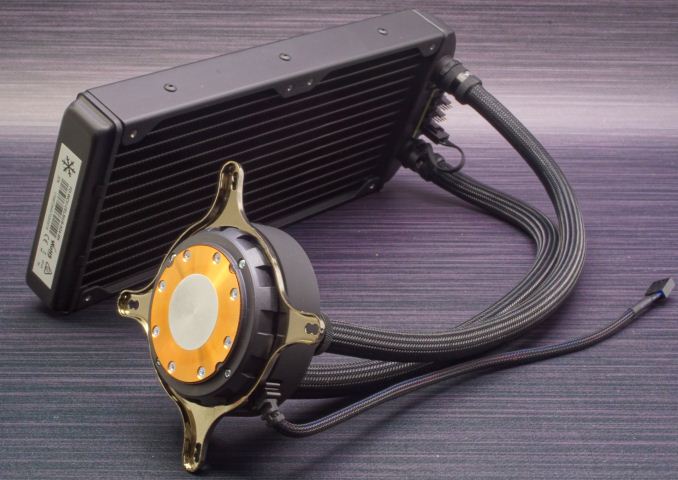
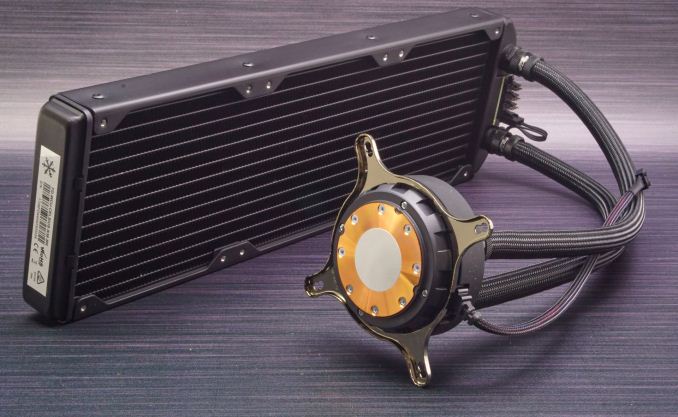
The Fractal Design Celsius S24 (left) and S36 (right)
The radiators of the S24 and S36 differ only in terms of length, with the former being 284 mm long and has space for two 120 mm fans, while the latter is 403 mm long and has space for three 120 mm fans. Both radiators are 30 mm thick and 123 mm wide. It is a common, proven core design, with wavy fins attached to thin oblong tubes. In theory, it is possible to install double the number of fans in a push-pull configuration, but that would not have a significant effect on radiators as narrow as these are, as the airflow impedance is not significant to begin with.
One of the simple features of the Celsius coolers that do stand out is the integration of a “power hub” on the radiators. This is meant only for the fans of the cooling kit, so the hub on the S24 has two headers, while that of the S36 has three. The hubs allow the users to connect the fans on the radiator and allow them to be controlled in parallel with the kit’s liquid pump from the motherboard’s header. With the hub’s cable routed through one of the hoses, this is exceptionally useful for users who are trying to build ultra-clean systems, without any visible or loose cables.
The hoses of both coolers are removable, allowing for the expansion of the kits if required. We found warranty seals on the hoses and Fractal Design states that removing them will limit the terms of the warranty, but not negate it completely. However, we would like to stress that there are two issues with these kits, should the user decides to go ahead with an upgrade. The first is that there are no fill ports and no reservoir, therefore proceeding with the upgrade without adding a reservoir would be a nearly impossible task for the average user. The second is the small ceramic pump that is integrated into the CPU block, which will be significantly overworked if it is called to drive the flow via several cooling blocks and a reservoir. It will undoubtedly work, but the overall performance will not be anywhere close to that of a stand-alone DIY liquid cooling system with a serious pump.
The circular CPU blocks betray Asetek’s involvement with these kits. The CPU block of the Celsius has a glossy top and matte black surround, without any lighting or complex geometric shapes. Only the company’s logo is partially etched at the top of the blocks. The matte black surround actually is a dial, allowing the user to switch between Auto and PWM speed control. It may feel like an overkill but it makes it exceptionally easy to reach inside the case, find the block and rotate the dial, even without any visual contact.
The copper contact plate is attached to the circular base of the block with eight screws. Thermal material is pre-applied to it and it comes with the Intel CPU mounting retention bracket installed from the factory. A retention bracket for AMD CPUs is included in the bundle. The Celsius is fully compatible with AMD’s latest Ryzen processors.


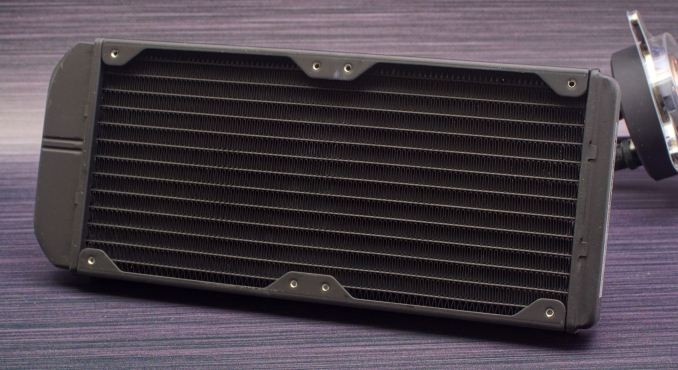
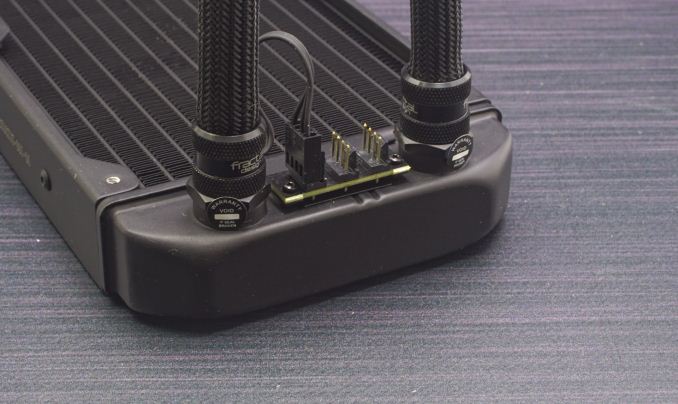
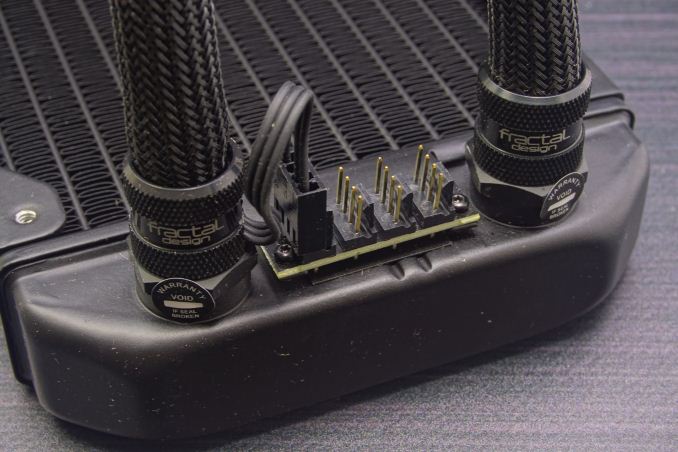
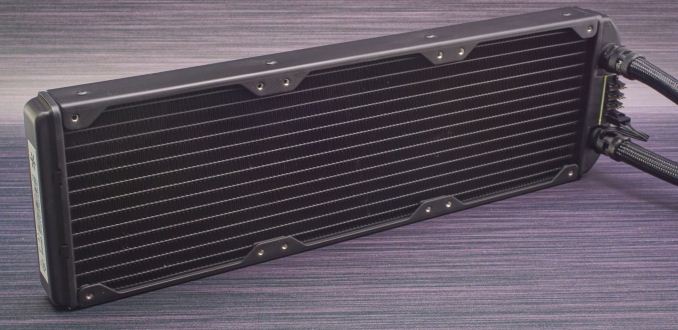
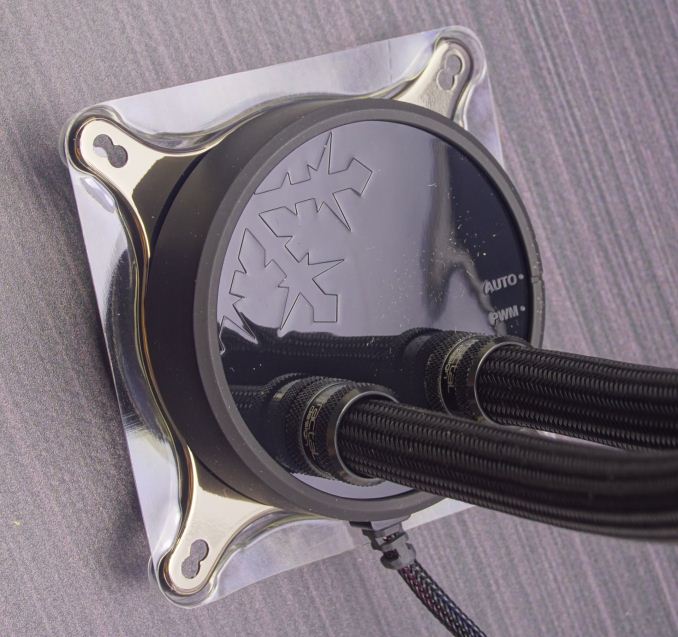
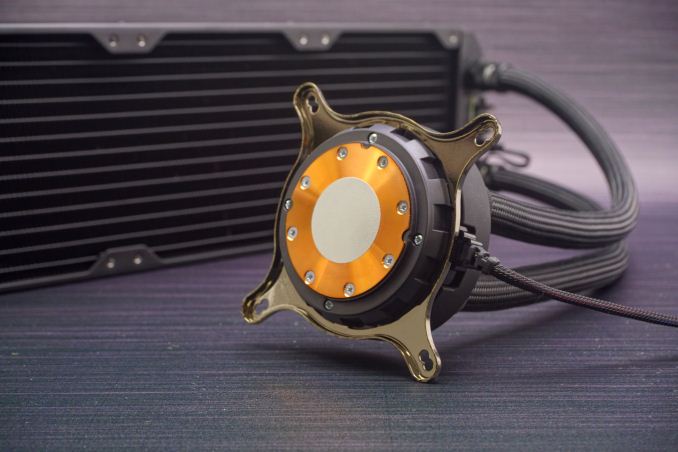








31 Comments
View All Comments
ratbert1 - Friday, June 2, 2017 - link
Please add a water cooled graphics card to the loop and see if it can cool both. That seems to be what these coolers are about.makerofthegames - Friday, June 2, 2017 - link
I was looking at these for a new build, because I might upgrade it to a custom cooling loop after a few years. An S36 would be a bit overkill for just a single consumer-grade CPU, but it would save the cost of a radiator if I upgrade. I'd still need a reservoir, GPU cooling block, and probably a pump, but it would at least save on the radiator.I might base my choice off what GPU I end up getting, since a long one would collide with the S36 in the case I'm using. And a radiator isn't that expensive, anyways.
nekronimus - Wednesday, October 18, 2017 - link
You could mount the S36 (pump) on the most popluar GPU using the kraken G12 GPU mounting kit. You could then buy a seperate CPU cooling block (50$) and reservoir and you're done. It's lot cheaper than mounting the S36 on the CPU and buying a seperate GPU cooler (starting 120$). Graphic cards are replaced more often than CPU's, so in the long run the first setup would also be way more cheaper, just by a new mounting kit and you're good to go.LawRecords - Saturday, June 3, 2017 - link
I'm building a new machine with a Phantek Evolv ATX case and the Celcius S24 cooler for the CPU. My GFX card is an air cooled Asus STRIX 1080 Ti. What is the best location of the radiator in that case, given that setup? I read somewhere that having the radiator at the top will be sub-optimal due to heat rising from the GFX card. Not sure if that's true. But regardless, where do you think will be best to minimize noise (want it as quiet as possible) for decent cooling?maximumGPU - Sunday, June 4, 2017 - link
you can always put it up top fans in pull rather than push. That way you won't take heat for your gpu, but more importantly (for me at least) you'd have positive air pressure in your case to keep dust out.To be honest though front or up won't make much difference in either temps (1-2 deg difference max) or noise, just go with whatever looks best to you and is easiest to install.
nekronimus - Wednesday, October 18, 2017 - link
Depends on how hot your 1080 Ti is running now. GPU's start throttling way faster than CPU's. I would avoid putting it in the front of your case, adding hot air to your GPU. Your CPU might run a degree or two colder but your GPU would have to endure an additional 3-5 degrees (depending on how well you airflow is through your case) whilst having less room before it starts throttling...sultan_khan - Sunday, June 4, 2017 - link
Please write on the following topicsAmazing Animated Gif Wallpapers-https://www.yourtechnocrat.com/gif-animated-wallpa...
PS3 Emulator android-https://www.yourtechnocrat.com/ps3-emulator-androi...
Linux OS For Android-https://www.yourtechnocrat.com/kali-linux-for-andr...
kushakizz - Thursday, June 8, 2017 - link
does the extra tube come with it for your video card...and if so all i have to do is buy a vc block riight and connect? or is there more to itJohnLinc - Tuesday, June 13, 2017 - link
thisistotesthedelayforwebTechEnthusiast - Friday, June 23, 2017 - link
Can we see real life scenarios now? I mean you've tested them using environments that nobody will use at home. Which is understandable if you want to achieve the maximum cooling capacity. But would like to see more normal examples on particular pc cases. I can also go to the north pole and see what temps i get there you know